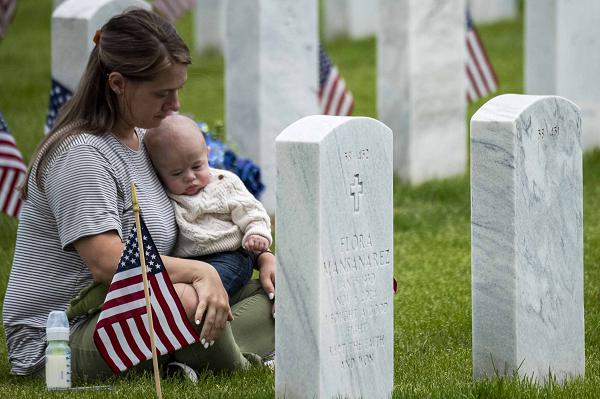
Fort Logan National Cemetery, Colorado. (May 25, 2025): While Arlington National Cemetery is the world’s most famous military burial ground, the majority of veterans are actually buried elsewhere. In this photo by Air Force Technical Sergeant Chance Johnson, Mikeala Plaszcz and her child visit the gravesite of her father at one of fourteen national cemeteries managed by the National Park Service.
The first national cemetery was established during the Civil War in 1861 to accommodate the horrific casualties of that bitter conflict. Troops on both sides were being killed at such a rate that on-site burials were simply not feasible. Initially, a system of twelve national cemeteries was established by an act of Congress in 1862. The act authorized the President to purchase land for the establishment of cemeteries for burial of those fighting on behalf of the United States.
By 1870, almost 300,000 Union soldiers and sailors lay buried in seventy-three national cemeteries, only half of the ultimately more than 600,000 men who died during the Civil War. After the war, the Army's Quartermaster General's Office planned additional national cemeteries with many more cemeteries being established in the 1860s and 1870s.
In 1973, Congress placed most of the national cemeteries under the jurisdiction of the Veterans Administration and new cemeteries were established in areas with underserved veteran populations. Today, the nation has more than 175 national cemeteries managed by three federal agencies: the Department of Veterans Affairs, the Department of the Army, and the National Park Service. Currently, 94 percent of Veterans have a burial option with the VA at state or tribal veterans’ cemeteries located within seventy-five miles of their home. Each veteran receives a headstone, a burial flag, and a memorial certificate honoring their service to our nation.


